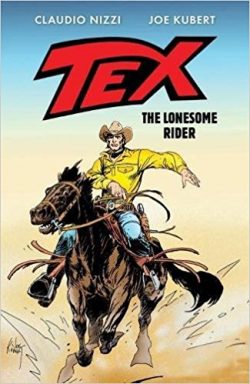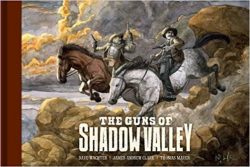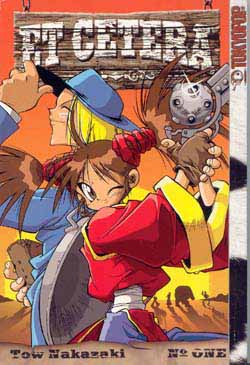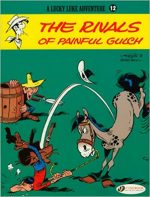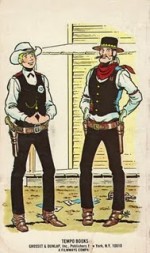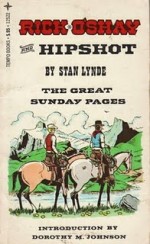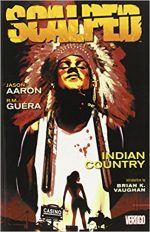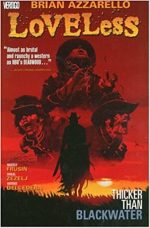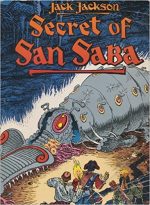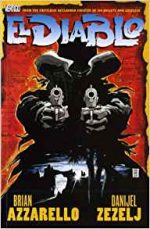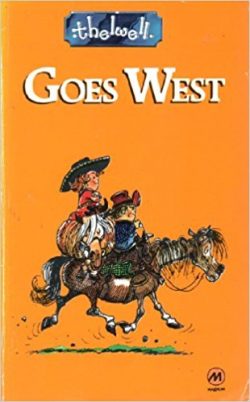
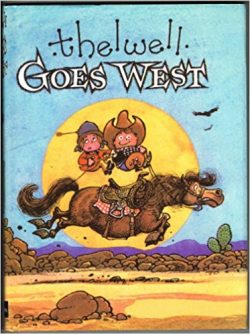
By Norman Thelwell (E P Dutton/Magnum/Eyre Methuen)
ISBN: 978-0-87690-189-2 (HB) Â Â Â Â Â Â Â Â Â Â Â Â Â Â Â 978-0-41701-110-3 (PB)
Norman Thelwell was and remains one of Britain’s greatest cartoonists. His genteel yet rowdily raucous artistic endeavours combined Bigfoot abstraction with a keen and accurate eye for detail, not just on the horse-riding and countryside themes that made him a household name, but on all the myriad subjects he turned his canny eye and subtle brushstrokes to.
His wittily wry observations and gloriously rendered pictures are an immaculate condensation of a uniquely unchanging United Kingdom – everything warmly resonant, resolutely Post-War and Baby-Boomingily British, without ever being parochial or provincial – starring a dangerous realm where all animals and inanimate objects loathe humanity and will go to any extreme to vex or even harm us…
His work has international implications and scope, neatly distilling and presenting us to the world. There were 32 collections of his work during his lifetime and every aficionado of humour – illustrated or otherwise – could do much worse than own them all.
From 1950 when his gag-panel Chicko first began in the Eagle, and especially two years later with his first sale to Punch, Thelwell built a solid body of irresistible, seductive and always funny work. His canny cartoons appeared in a host of magazines, comics and papers ranging from Men Only to Everybody’s Weekly. His first curated cartoon collection – Angels on Horseback – was released in 1957 and in 1961 he made the rare return journey by releasing a book of all-original gags that was subsequently and rapturously serialised in the Sunday Express.
His dry, sly, cannily observed drawings were a huge success and other books followed to supplement his regular periodical appearances. He is most famous for his countryside and equine subjects. The phrase “Thelwell Pony†is an instant verbal shortcut to a whole other world of adroit, goblin-like little girls constantly battling malevolent, chubby mini-horses gifted with the guile of Machiavelli, the mass and temerity of a deranged mule and the cheery disposition of Bill Sikes.
The artist’s fascination and endless reservoir of dressage drollery originated with a pair of short obnoxious muses in the field next door to his home, where also roamed two shaggy ponies. They were, in his own words “Small and round and fat and of very uncertain temper†– and apparently owned by “Two little girls about three feet high who could have done with losing a few ounces themselves….â€
“As the children got near, the ponies would swing round and present their ample hindquarters and give a few lightning kicks which the children would side-step calmly as if they were avoiding the kitchen table, and they had the head-collars on those animals before they knew what was happening. I was astonished at how meekly they were led away; but they were planning vengeance – you could tell by their eyes.â€
His observations were best depicted in the classic Penelope and Penelope Rides Again, but in this particular instance, the master of the hounds and hilarious horseflesh cast his gaze a little further afield for a wickedly insightful and memorable draughtsman’s discourse, acutely weighing the benefits and pitfalls (oh, so very many painful falls) of Brit and Yank riding preferences and techniques.
After his introductory comparison/blueprint ‘The English Rider’ and ‘The Western Horseman’ Thelwell pits cocky little Cowboys against surly Show-jumping Schoolgirls in such compelling, picture packed chapters as Western Riding, What to Wear, Western Horses, Quick on the Drawl, How to Understand Your Horse, On the Trail, How to Manage a Mean Horse, How to Cross Water and Rodeo Dough before ending with a comprehensive Western Quiz.
So, which is best: East or West?
The answer, of course, is simple: Best to avoid all close encounters of an equine kind and read this book instead.
© 1975 Norman Thelwell.

